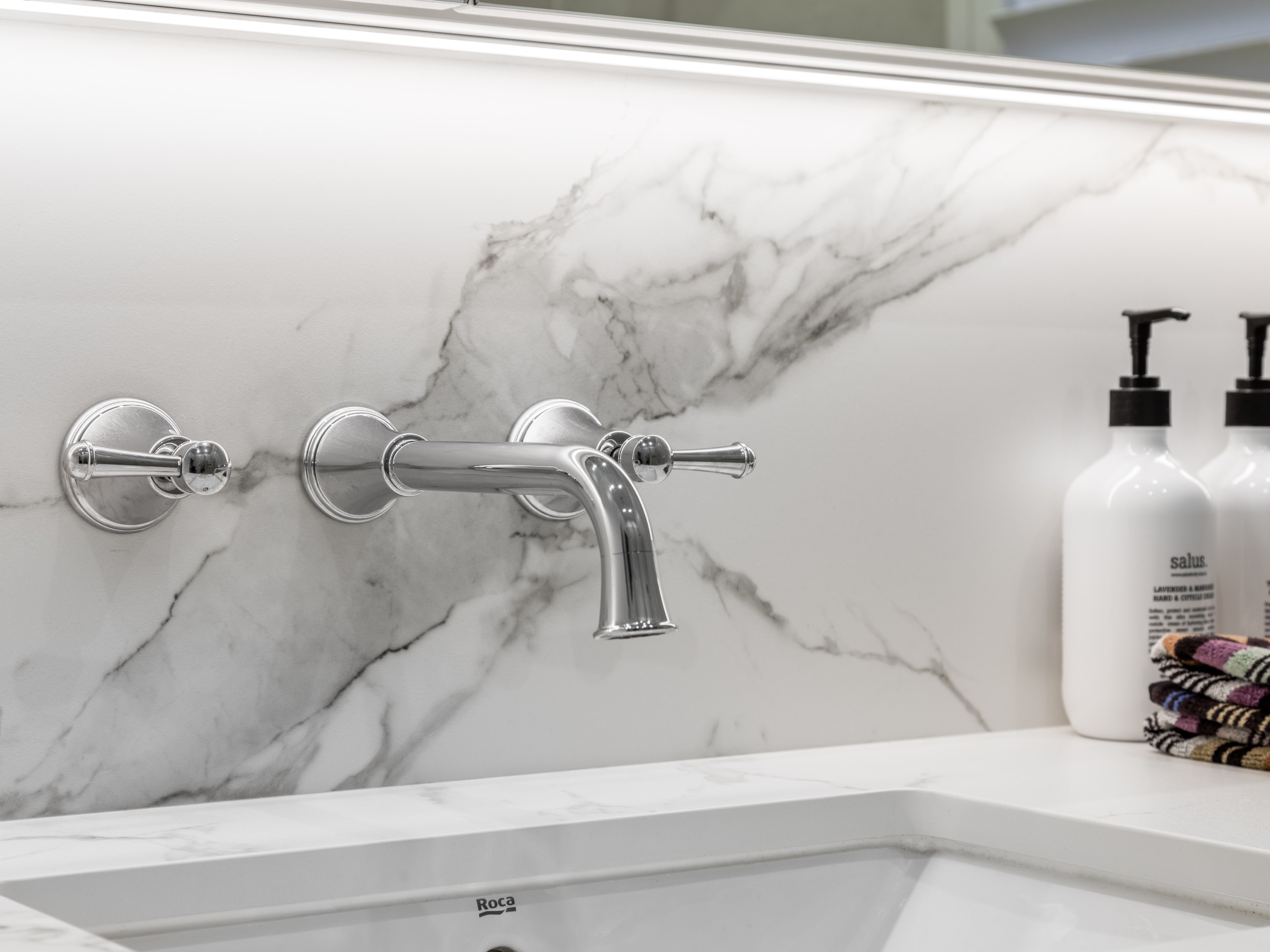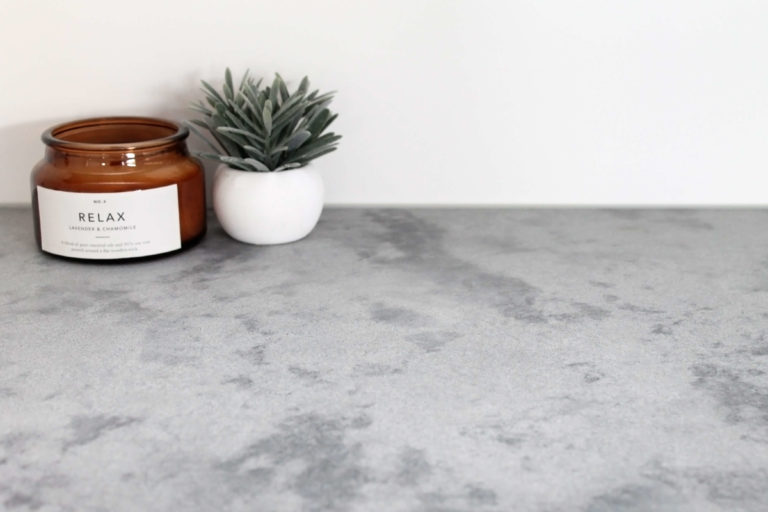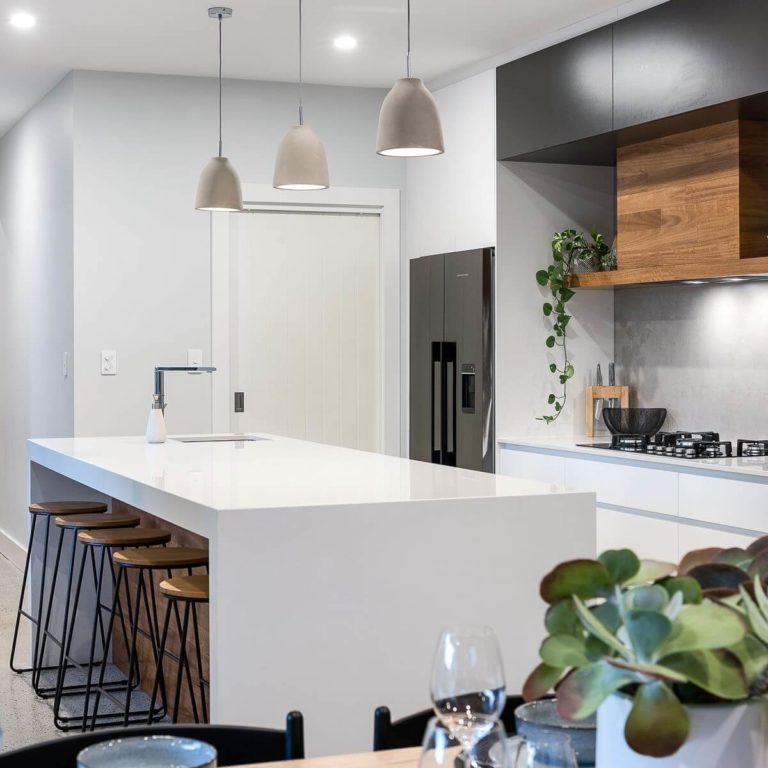Splashbacks are a great way to protect your walls from spills, stains and steam. Not only are they highly functional, but can be a great way to experiment with bold styles, textures and shapes.
The materials you can select from are almost limitless. Ranging from bold geometric tiles to scenic windows on looking leafy courtyards, choosing what will be right for your home can get overwhelming.
So why stone? We may be biased but stone splashbacks are an excellent option for durability, longevity and style. However, some materials do come with extra maintenance and precautions. We’ve put together our ultimate guide on stone splashbacks so you can feel confident in choosing the right option for you.
Cost
Stone splashbacks are a little more pricey compared to tiled and acrylic options. They’re often charged per square metre and the price will vary between stone varieties.
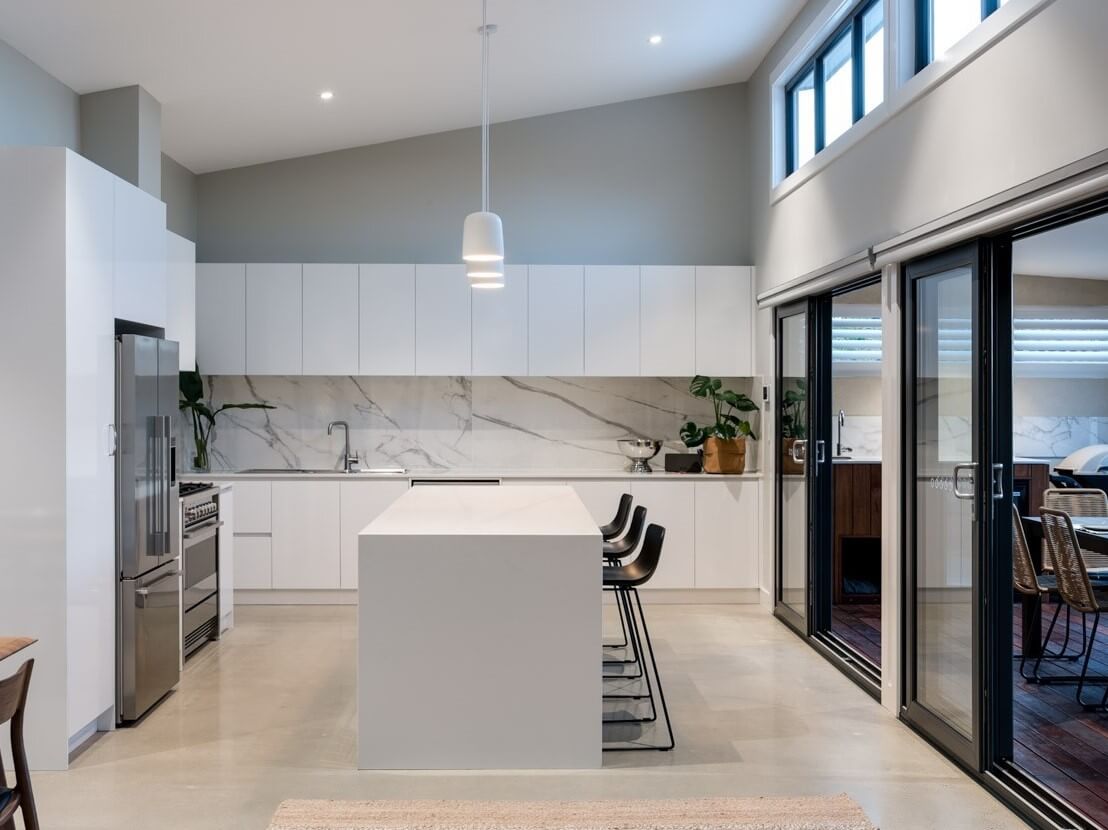
Maintenance
Make sure to clean your stone splashback using a damp sponge with soapy water then immediately dry with a clean cloth. Avoid hard abrasives, and alkaline or acid-based products as they can leave marks on surfaces causing permanent damage.
Style Curator suggests you choose a durable stone and understand what level of care is involved.
If you have a natural stone splashback, you’ll need to reseal it regularly – how frequently will depend on the type of material. Natural stone has a higher porosity, hence it’s more susceptible to absorbing spills and stains – so resealing will protect your splashback and make it last.
A good tip is to check your supplier’s warranty and care guide for more information.
Style
Stone splashbacks create a luxurious and timeless look. Plus if you match your benchtop, it creates a seamless, elegant style.
Interior designer Anne Ellard suggests getting these both installed at the same time “so that they can both be made from the same batch of stone to avoid any colour variations.”
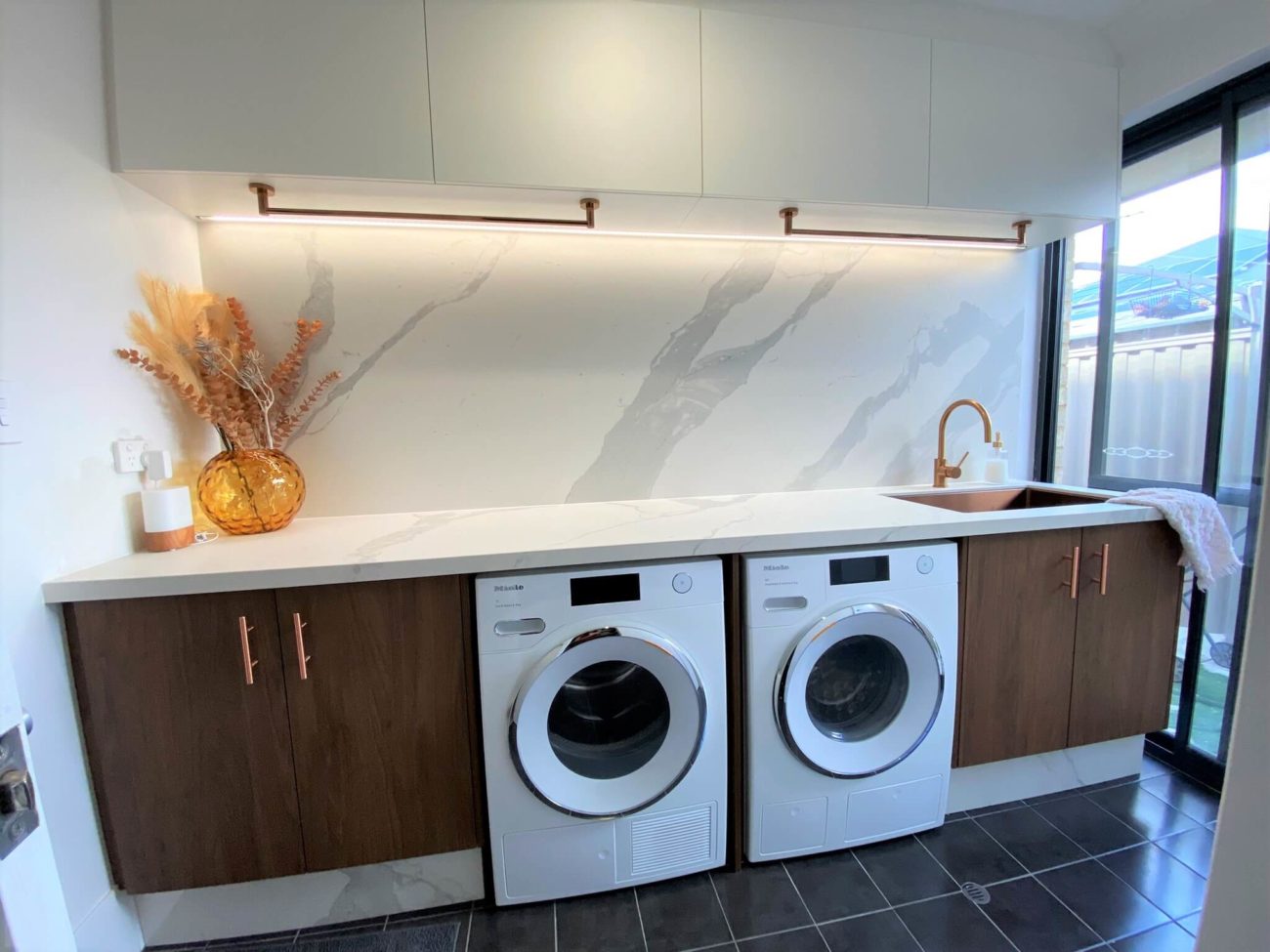
Selecting stone variety
Stone is a highly durable material that can withstand scratches, heat and moisture when cared for appropriately.
When selecting your splashback material, consider what elements it will be exposed to. Will it be positioned behind a stovetop? Is it near the sink? This can determine what stone variety is appropriate for your space.
For example, engineered stone is extremely low-porous and stain resistant, which adds a good hygiene factor to the kitchen. Porcelain is virtually non-porous, creating a hard surface that won’t absorb messes from cleaning and cooking. Additionally, Granite is one of the hardest stones on the market, being super heat resistant and is fairly low maintenance.

